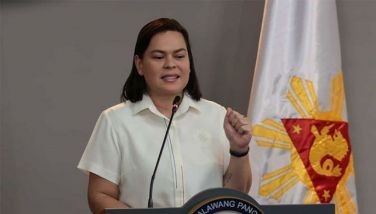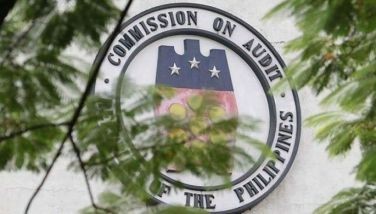Gov’t needs to create more and better jobs

Last Tuesday this paper’s front page featured the Philippines as having moved up from being 90th to 82nd in Forbes’ 2014 “Best Countries for Business” list among 146 countries, posting improvements from 2013 in 8 of the 11 indicators used as bases for the rankings.
Little comfort, you may say, since ranking 82nd is still way below the list’s halfway mark (73rd). And although, of the 10 ASEAN member-countries whose economies will be integrated this year the Philippines is touted as having the highest GDP growth rate, in this list she ranks only fifth after Singapore (8th), Malaysia (37th), Thailand (62nd), and Indonesia (77th). The other’s rankings: Vietnam (111th), Cambodia (121st), Laos (130th), and Myanmar (143rd).
But let’s look at the eight indicators (factors considered in making investments) where the Philippines reportedly improved. These were:
Stock market performance, from 63rd to 13th; innovation, from 66th to 51st; monetary freedom, from 61st to 56th; property rights, from 74th to 67th; technology, from 74th to 68th; corruption, from 86th to 78th; and red tape, from 131st to 130th. The country’s ranking in trade freedom (86th) and tax burden (101st) didn’t change.
(The points for the rankings were culled by Forbes from data supplied by the World Bank, World Economic Forum, Transparency International, Heritage Foundation, Freedom House, Property Rights Alliance, and the Central Intelligence Agency.)
Note that in the twin areas where the P-Noy government has focused in the last 4-1/2 years, — eradicating/reducing corruption and red tape — it has a long way to go towards leaving a positive legacy.
Add to that the negative score on investor protection: a drop from 103rd to 124th. This indicator is critically important to foreign investors, which the P-Noy government and all previous administrations have sought to attract through various incentives — including the controversial pending legislative move to amend the 1987 Constitution’s economic and national patrimony provisions.
Besides the 11 indicators, Forbes cited other concerns (also raised in several other studies and surveys) on which the Philippines is challenged to do better.
An immediate-to-long term challenge, it says, is to reduce unemployment and improve the quality of jobs. The other concerns/challenges cited were reforming governance and the judicial system; building infrastructure; and improving the predictability of investment regulations and ease of doing business.
That’s a huge bundle of to-dos that the Philippine government must address to boost the country’s rating as top investment preference — if it accepts the Forbes list criteria. Amending the Constitution doesn’t explicitly figure in the bundle.
Reducing unemployment and improving job quality means prioritizing national industrialization and agricultural modernization (based on thoroughgoing agrarian reform), with agriculture-linked manufacturing able to generate jobs in the millions. This also entails raising the workers’ wages and fringe benefits, and ensuring job security — if attaining inclusive economic growth and reducing endemic poverty are to be assiduously pursued.
What has the Aquino administration done towards achieving these goals?
The department of trade and industry has formed an “industry development and trade policy group,” purportedly to spearhead a “manufacturing resurgence program” aimed at making the Philippine manufacturing sector a vehicle for inclusive growth. The group is headed by DTI undersecretary Adrian Cristobal Jr., concurrently managing head of the Board of Investments.
This week Cristobal told a business daily, “We saw triple-digit growth in different manufacturing subsectors last year” adding “we expect that to continue.” The subsectors were food products, beverages, basic metals, motor vehicles, refined petroleum products, fabricated metal products, and wood.
He cited Board of Investment data showing that investments in manufacturing jumped by 77.5% (from P13.8 billion in 2013 to P24.5 billion in 2014). Low figures these may be, Cristobal said, but “we are competitive already as a destination for [manufacturing] investments.”
However, a subsequent report of the same daily (Business Mirror), also citing the BOI, said that new projects (manufacturing and non-manufacturing) committed by foreign firms that were approved by the BOI dropped by 69% in 2014.
In 2013 the BOI approved fresh foreign investments totaling P120 billion, but in 2014 it approved only a total of P36.85 billion. The big drop was attributed to “lack of substantial power projects” that Cristobal mistakenly interpreted as indicating that the country had already attained sufficient capacity in power generation.
(Total approved investments in 2013: P466.03 billion, dipping to P354.5 billion in 2014.)
It’s interesting to note what enterprises hogged the bulk of the approved foreign investments.
In 2013, one firm in the Virgin Islands (British) accounted for P61.51 billion, or more than half of the P120 billion total approved foreign investments. It was placed in the firm’s subsidiary Energy City Philippines Holdings, Inc. The foreign investment share of all approved projects was 26%.
In 2014, however, the foreign investment share dropped to only 10%. And the biggest share, less than a third of the total, was P10.2 billion taken by Unilever, a Dutch consumer goods manufacturer.
For 2015, the BOI list of priority manufacturing projects mainly concerns motor vehicles: parts and components, body stamping, motors and batteries for electric vehicles. The rest of the list includes agribusiness and fishery, services, economic and low-cost housing, hospitals, energy, public infrastructure and logistics, and the much-delayed P-Noy public-private partnership projects.
Let’s watch how these will work out in providing good, stable jobs.
* * *
Email: [email protected]
- Latest
- Trending





























